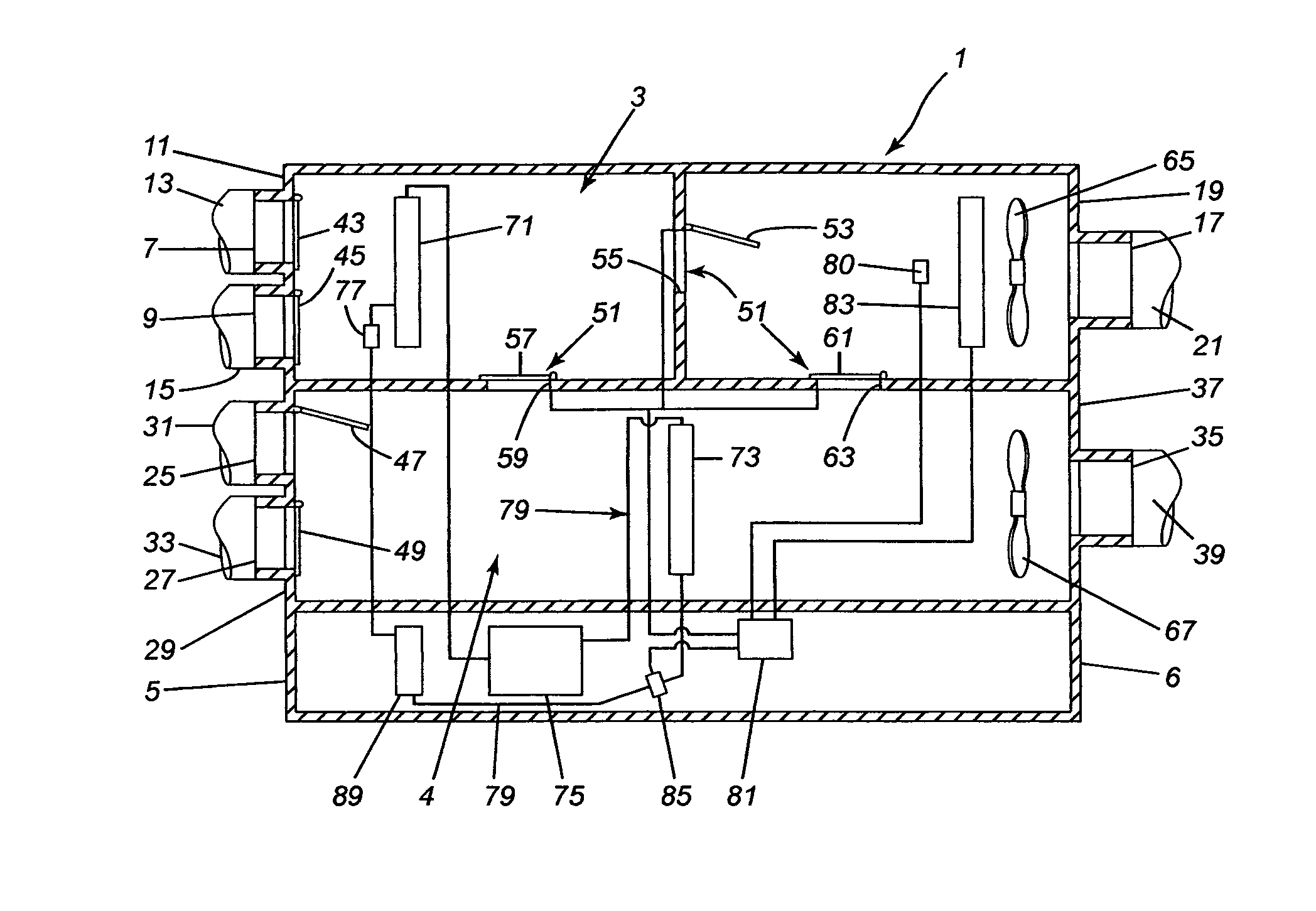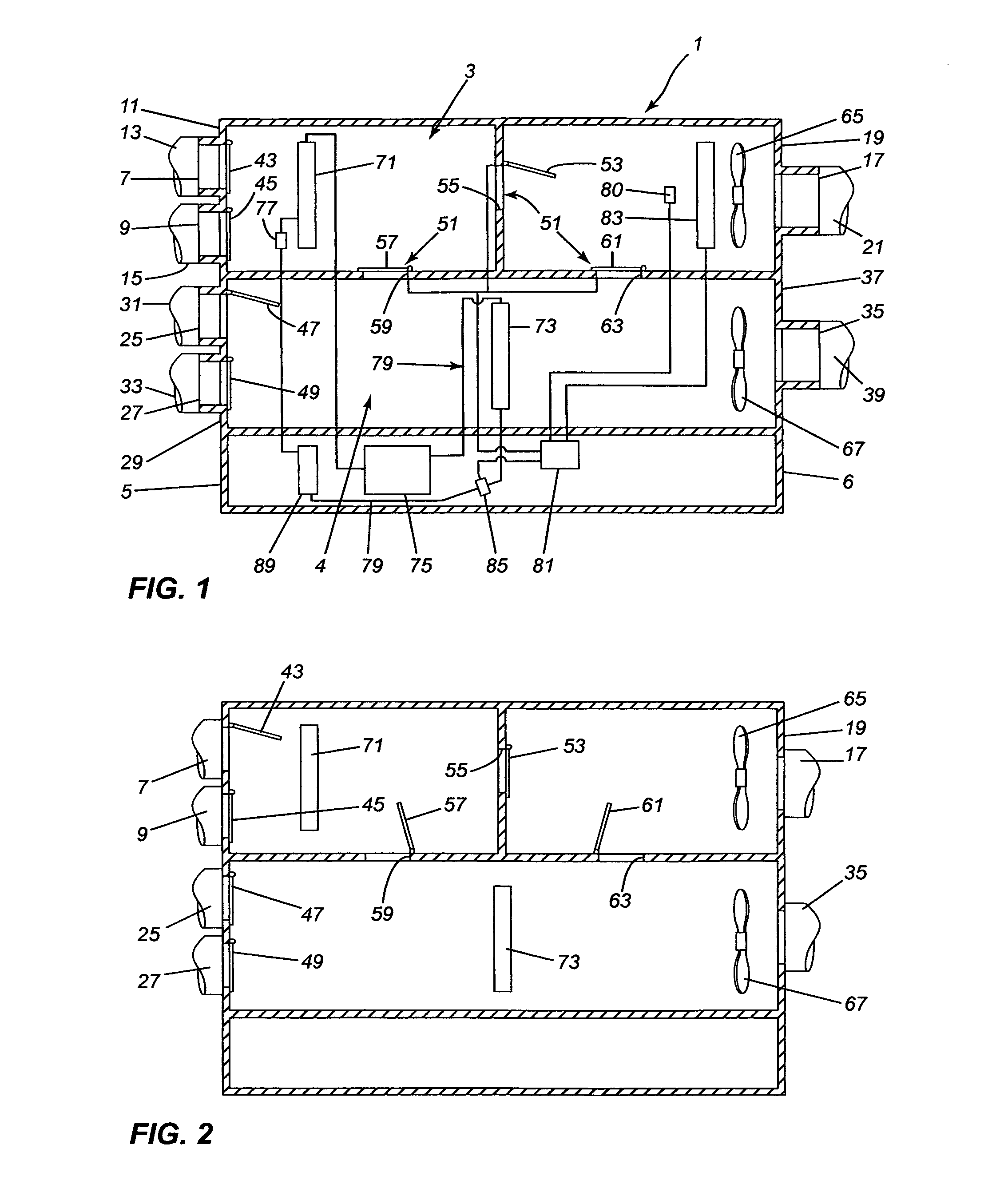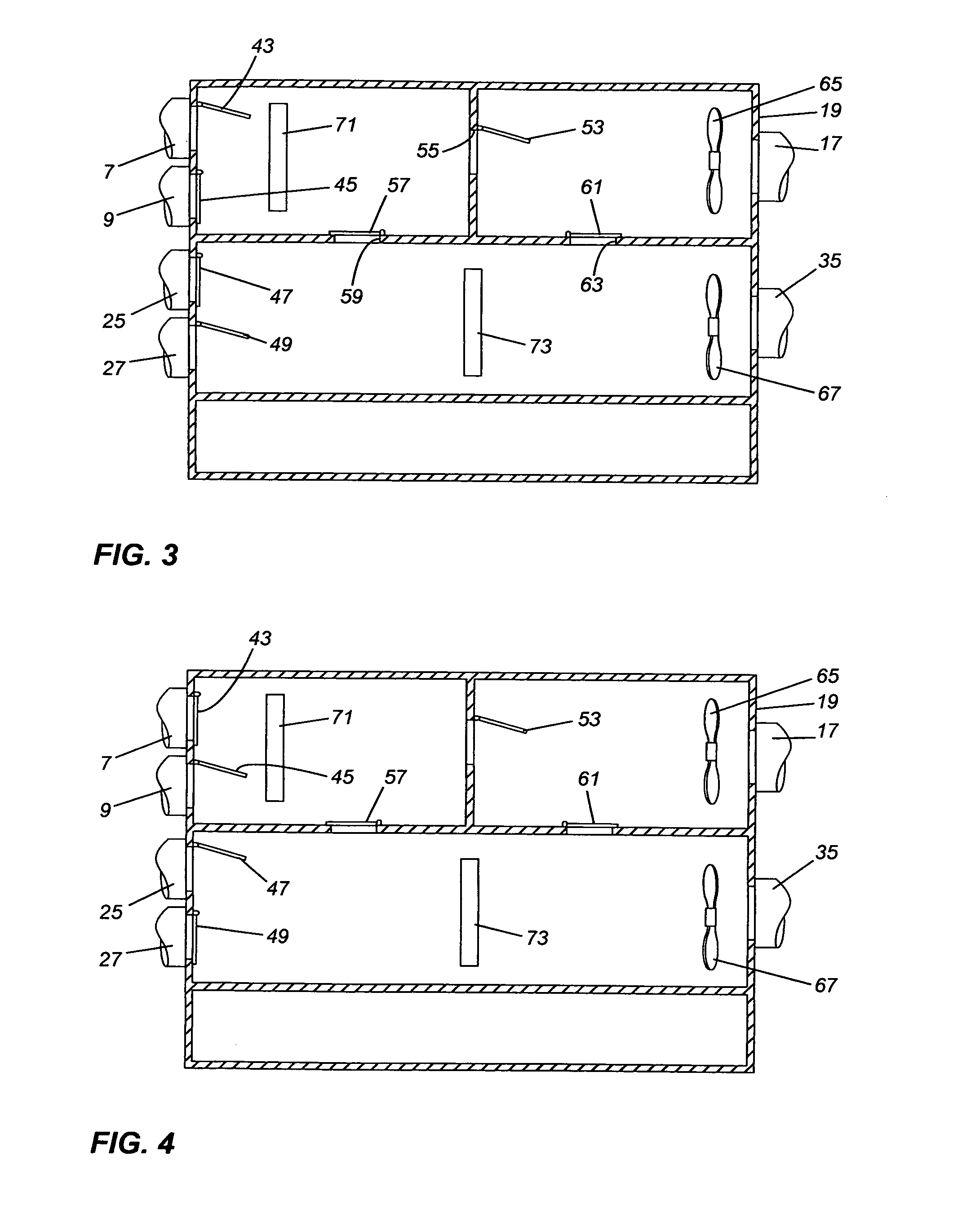Air conditioning/dehumidifying unit
a technology of air conditioning and dehumidification unit, which is applied in the direction of energy-saving heating/cooling, lighting and heating apparatus, heating types, etc., can solve the problems of large amount of refrigerant required, high cost of refrigerant oil replacement, etc., to achieve convenient and convenient maintenance, easy modification, and easy installation and operation.
- Summary
- Abstract
- Description
- Claims
- Application Information
AI Technical Summary
Benefits of technology
Problems solved by technology
Method used
Image
Examples
Embodiment Construction
[0026]The air conditioning / dehumidifying unit 1, shown in FIG. 1, has a first, preferably straight, air passageway 3 and a second, preferably straight, air passageway 4 extending through the unit between the ends 5, 6 of the unit. The second air passageway 4 is preferably adjacent and parallel to the first air passageway 3 and they preferably share a common wall 7. The first air passageway 3 has a first indoor air inlet 8 and a first outdoor air inlet 9 at one end 11 of the passageway. The first air inlets 8, 9 extend through one end 5 of the unit. The first indoor air inlet 8 is connected to an indoor air return duct 13 on site to bring air from an indoor area to the first air passageway 3. The first outdoor air inlet 9 is connected to an outdoor air duct 15 to bring air, from outside an enclosure enclosing the indoor area and the unit, to the first air passageway 3. The first air passageway 3 also has an indoor air outlet 17 at the other end 19 of the passageway. The indoor air ou...
PUM
 Login to View More
Login to View More Abstract
Description
Claims
Application Information
 Login to View More
Login to View More - R&D
- Intellectual Property
- Life Sciences
- Materials
- Tech Scout
- Unparalleled Data Quality
- Higher Quality Content
- 60% Fewer Hallucinations
Browse by: Latest US Patents, China's latest patents, Technical Efficacy Thesaurus, Application Domain, Technology Topic, Popular Technical Reports.
© 2025 PatSnap. All rights reserved.Legal|Privacy policy|Modern Slavery Act Transparency Statement|Sitemap|About US| Contact US: help@patsnap.com



